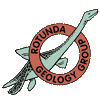Autumn Programme - 8 October 2015
Geology in the defence of the accused
Dr Chris Jeans, University of Cambridge
The last part of the 20th Century and the first decade of the 21st has not been a very comfortable time for British Criminal Justice, at least in the eyes of the caring public. It was not the best time for expert witnesses and even less for those accused of child abuse or murder. The quality and independence of expert witnesses was being challenged and sometimes shown to be seriously lacking. The BBC’s programme, Rough Justice’ was flourishing and MOJO - the Miscarriage of Justice Organisation - was not short of cases. Neither exist today. Were they too revealing, or were problems in such short supply that they had to shut up shop? Or, perhaps, did the public paymasters think it better for the viewing public to see how justice and forensic deduction was actually done in those TV soap operas?
In the early 1990s along came Geoforensics, promoted and pushed by certain academics. Not a new topic by any means, the use of geological evidence in one way or another is of long standing. One of its facets sold to the Police was a form of finger printing - not of human fingers but of the soil environment which may have come into contact with footwear or clothing thus providing a ‘finger print’ of the complex association of natural and man-made components that make up soils in a particular location. Apparently it was claimed that the Police laboratories did not give this type of evidence the diligence it deserved. I entered this scene suddenly and unexpectedly at Christmas 1999 to help to critically assess evidence put forward by the Prosecution in a case being heard in the Bristol Crown Court. This was the first in a series of murder trials between 2000 and 2010 that demonstrated the limitation of the concept “sold” to the Police. In the nitty-gritty of the battles between what the soil evidence claimed to show and what it actually demonstrated, geological analysis, in conjunction with novel methods of preparing samples, combined with other lines of evidence, often played an important role in deciding the issues.
